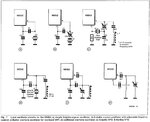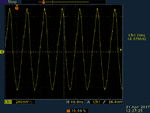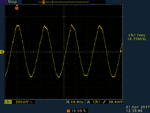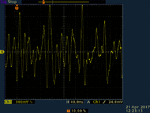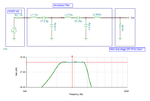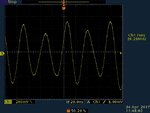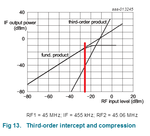atlantis7
Member level 2
Hi
I need help with a SA602 design that should become a TX mixer in the end, however I'm stuck already with the oscillator. I need a 10.7 MHz oscillator and want it to be the basic colpitts topology with the crystal on pin 6 to ground, C1 between pins 6 and 7 and C2 on pin 7 to ground. The C1/C2 combination I calculated according to the "NE602 Primer" by Joseph Carr is 33p/100p, however I also tried 27p/270p, 47p/150p and 10p/22p, but whatever I do it doesn't seem to oscillate at all! What am I possibly doing wrong? At pin 6 I measure VCC and at pin 7 VCC minus about 0.5V and I have not connected any in- and outputs yet.
Kind regards
Martin
I need help with a SA602 design that should become a TX mixer in the end, however I'm stuck already with the oscillator. I need a 10.7 MHz oscillator and want it to be the basic colpitts topology with the crystal on pin 6 to ground, C1 between pins 6 and 7 and C2 on pin 7 to ground. The C1/C2 combination I calculated according to the "NE602 Primer" by Joseph Carr is 33p/100p, however I also tried 27p/270p, 47p/150p and 10p/22p, but whatever I do it doesn't seem to oscillate at all! What am I possibly doing wrong? At pin 6 I measure VCC and at pin 7 VCC minus about 0.5V and I have not connected any in- and outputs yet.
Kind regards
Martin


